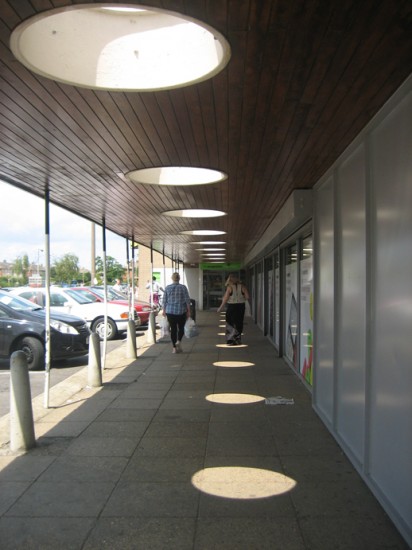by Jude Rogers.
Places never stay the same, however much we want them to. When a familiar street corner is given a fresh lick of paint, we feel it in our bones. When an old home, no longer ours, opens its windows to different worlds, it’s hard not to feel something disappear.
Beyond these personal locations, these little spaces in our lives, larger landscapes themselves seems unchanging, immobile. They do even though we know, in our gut, that they change. Tides erode, after all, weather weathers, lands shift. But in recent years, I keep getting drawn to landscapes where change reveals itself powerfully, their coasts fallen, their buildings emptied, their valleys drowned, their people gone. To me, these vanishing points form a huge part of who we are, and say so much about our country, as well my consciousness.
1. Bataville, East Tilbury
East Tilbury, in Essex, sits on a turning point of the Thames, as the river breaks north, razor-sharp, at a right angle. Here, it opens up wide and becomes something else, stretching its mouth towards the North Sea.
Coming into the train station from the west, however, this is not the first thing you notice. Instead, if you look to the south, you see a factory complex, eerily alone in the middle of sunstruck green fields. Its stark modernist lines look disjointed, too Eastern European, for England. It feels like someone has taken an image from a book of utopian Socialism, and glued it, haphazardly, into the present.

But for years, this village was defined by these buildings. In the early 1930s, a Czech shoe salesman, Tomás Bat’a, came to this outpost of Thurrock, and decided to turn it into a factory town. Taking his Bauhaus-inspired headquarters in Zlin as a starting point, he had developed self-functioning small cities, in the same image, around the globe. Eighty years on, the seeds of his work are still here: the houses for managers and workers, the social facilities and shops. Many have been altered in the decades that followed, however; many are broken-down, shuttered and spent. Nevertheless, all of them still reveal the contours of an idealistic age, a long-lost vision living on in walls, joints and structures.
On Bata Avenue, eight listed cube-shaped houses sit forlornly and quietly. Most of their window-frames are painted in regulation green, but a few have rebelled in bright whites and glossy browns. Further down, the factory lies empty; only a few industrial units on the same site showing tiny signs of activity.
The statue of Bata’s founder stands nonchalantly outside, one hand in his pocket, always the people’s man.

Across the main road, the old Bata Cinema is now the Village Hall. On this Saturday in high summer, it is padlocked, its paintwork worn and tatty. A yellow sign reminds people that it can be hired by the community. On the same side of the road, the old grocery is now the local Co-Op, its circular roof-lights still preserved perfectly. Sunlight pours through these portholes, casting bright, white haloes on the pavement.

Behind them, the crescents of houses pour out, now with double-glazing and double-fronted garages. The old managers’ homes look out on the roundabout like small, ancient villas, pebbledash and recycling bins reminding us where we are.

Around the corner, the local library is lined with glass cabinets, telling us what East Tilbury used to be. Workers overalls and dresses sitting among the literature and photographs: here is the sports club, the primary school, the rulebook for tenants, the Gala days. The volunteer behind the counter tells us how his family worked there. It had dominated their lives. Bata shoe shops sat on every high street when he was a child. I had never heard of Bata before I decided to come here. I wonder how these names, well-known and loved, can vanish in a generation.
Then we leave the buildings behind, and we walk towards the river. We pass wide, empty fields where the factory was meant to grow to. After a mile, we meet the water, and an old military fort. I see my first adder, sunbathing on a path, glistening sardine-silver and black. I see tiny dandelions and bluebells fight their way out of the scrub. I watch tiny rainbows of butterflies swarming out of the trees. On the shore itself, I watch a man fishing by a water tower, ships sailing out to Hamburg Süd.
And as we turn on that right-angled corner, as the Thames enters its last bend, we pass a memorial bench for a young boy. It sits in a little hollow facing out towards the tide, teddy bears and small plastic toys sitting nearby. Harry was six-and-a-half when he died. His picture below the plaque, front teeth missing, beams out at me.

I sit here for a moment looking towards the North Sea. I think of the lost land right here, the lost land behind me, how everything vanishes, but never really leaves us.
